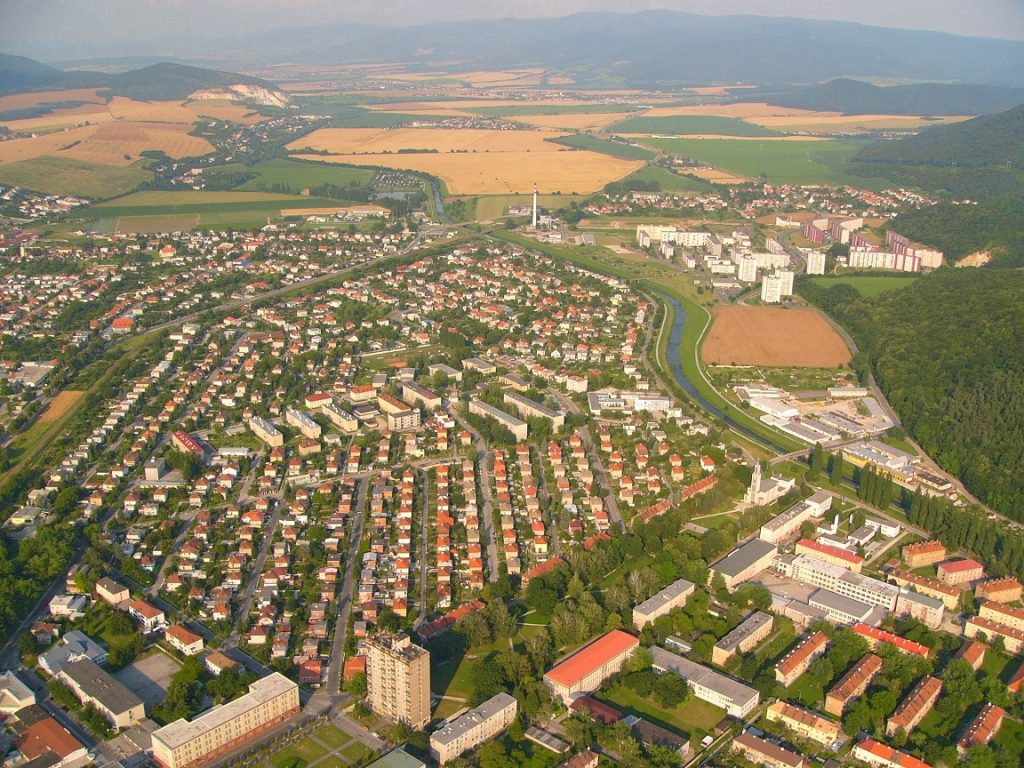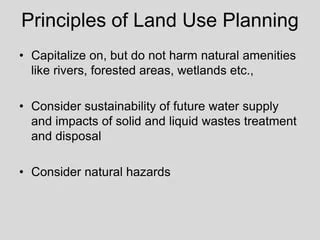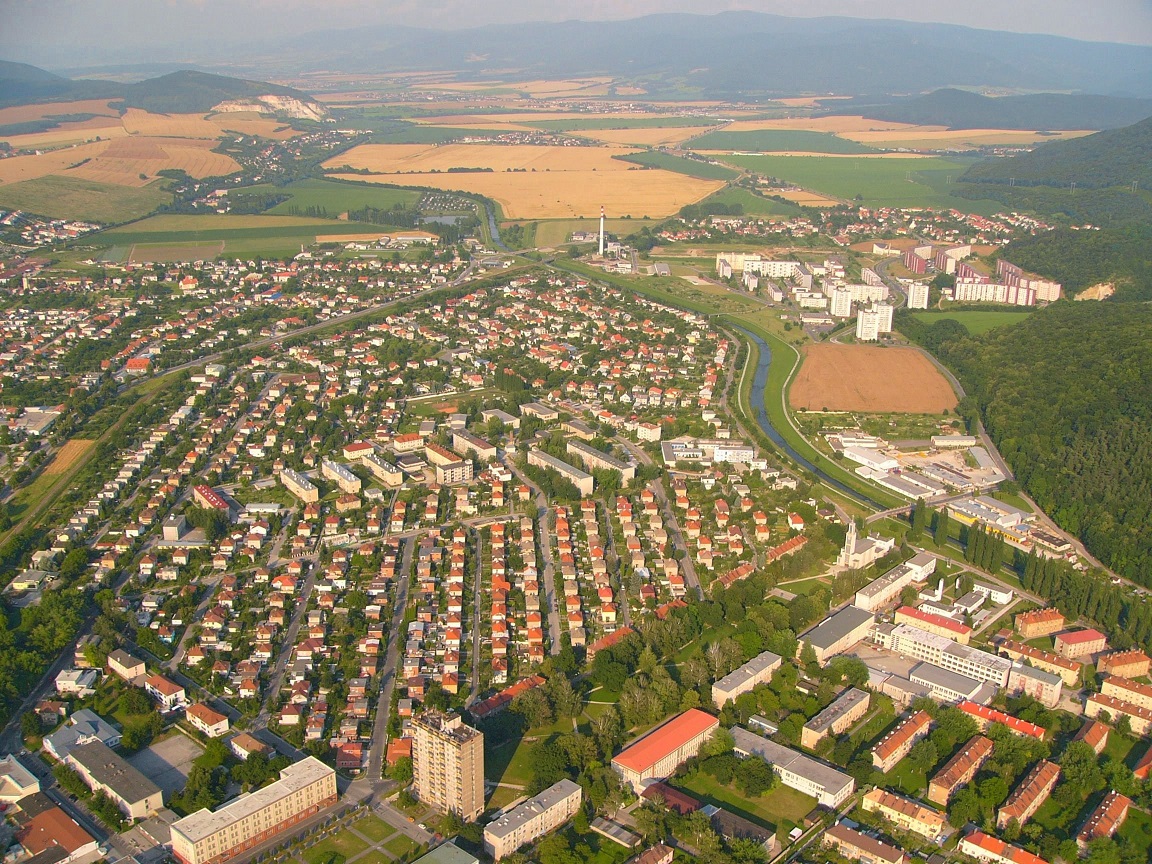In this post, you will learn the following:
- History and Evolution
- Origins and development of urban planning
- Influential planning theories and movements
- Principles and Concepts
- Basic principles of land use planning
- Key concepts in regional planning
Introduction to Urban and Regional Planning
Urban and regional planning is crucial for creating sustainable, livable, and efficient communities. It plays a vital role in organizing land use, infrastructure, and services to meet the needs of present and future populations. Effective planning can lead to improved quality of life by ensuring access to essential services like transportation, healthcare, education, and recreation. It also promotes economic development by attracting businesses and investments, creating jobs, and supporting local economies. Additionally, planning helps to mitigate environmental impacts by promoting sustainable practices, preserving green spaces, and enhancing resilience to climate change. Through participatory processes, it ensures that community needs and preferences are considered, leading to more equitable and inclusive development. In essence, urban and regional planning is key to fostering harmonious, prosperous, and sustainable communities.
History and Evolution of Urban and Regional Planning
*Origins and development of urban planning
The origins and development of urban planning are deeply rooted in the history of human civilization, reflecting the evolving needs, technologies, and cultural values of societies. Here’s an overview of its history and evolution:
Ancient Civilizations
Urban planning can trace its roots back to ancient civilizations. Early examples include:
- Mesopotamia: One of the earliest known urban plans is from the city of Ur, around 2100 BCE, with a distinct layout featuring residential, commercial, and religious zones.
- Indus Valley Civilization: Cities like Mohenjo-Daro and Harappa (circa 2500 BCE) were noted for their grid-like street patterns, advanced drainage systems, and standardized building materials.
- Ancient Egypt: Cities were planned with monumental structures, reflecting the importance of religion and governance.
Classical Antiquity
Urban planning continued to evolve with the Greeks and Romans:
- Ancient Greece: Greek cities such as Athens and Sparta had public spaces like agoras and were often designed according to Hippodamian planning principles, characterized by a grid system and central public spaces.
- Roman Empire: The Romans further developed urban planning with their military camps (castra), which influenced the layout of many Roman cities. They also introduced advanced infrastructure, such as roads, aqueducts, and sewage systems, enhancing urban functionality.
Medieval Period
Urban planning saw a decline during the early medieval period but revived in the late medieval period:
- Medieval Europe: Cities grew organically, often centered around a castle, church, or market square. Streets were narrow and irregular, with a focus on defense and trade.
- Islamic Cities: In the Islamic world, cities like Baghdad (founded in 762 CE) were designed with a circular plan, integrating mosques, markets (souks), and residential areas.
Renaissance and Enlightenment
The Renaissance brought a renewed interest in classical principles and the integration of art and science in urban planning:
- Renaissance Italy: Cities like Florence and Rome saw the implementation of grand boulevards, public squares, and monumental buildings. Architects like Leonardo da Vinci and Michelangelo contributed to urban design.
- Baroque Planning: The Baroque period introduced the idea of grand avenues, axial symmetry, and monumental vistas, as seen in cities like Paris and Rome.
Industrial Revolution
The Industrial Revolution (18th-19th centuries) dramatically changed urban landscapes:
- Rapid Urbanization: Industrialization led to massive population growth in cities, resulting in overcrowded, unsanitary, and unsafe living conditions.
- Reform Movements: The adverse effects of industrialization prompted urban reform movements. Figures like Sir Ebenezer Howard proposed the Garden City movement, advocating for self-contained communities surrounded by greenbelts.
20th Century and Modern Era
Urban planning became more systematic and professionalized in the 20th century:
- Modernist Planning: Le Corbusier’s “Radiant City” concept emphasized high-rise residential blocks, wide streets, and separation of functions (residential, commercial, industrial). This influenced the development of many cities worldwide.
- Post-War Reconstruction: After World War II, many European cities underwent reconstruction, focusing on modern infrastructure and urban renewal projects.
- New Urbanism: In response to suburban sprawl and environmental concerns, the late 20th century saw the rise of New Urbanism, promoting walkable neighborhoods, mixed-use development, and sustainable design.
Contemporary Urban Planning
Today’s urban planning addresses a wide range of issues, including sustainability, resilience, and social equity:
- Sustainable Development: Emphasis on reducing carbon footprints, promoting public transportation, and integrating green spaces.
- Smart Cities: Incorporating technology and data analytics to improve urban services and enhance the quality of life.
- Participatory Planning: Engaging communities in the planning process to ensure that development meets the needs of all residents.

Urban planning continues to evolve, reflecting the dynamic nature of cities and the changing needs of their inhabitants. It integrates various disciplines, including architecture, engineering, environmental science, and social sciences, to create functional, equitable, and sustainable urban environments.
Influential planning theories and movements
Urban and regional planning has been shaped by numerous influential theories and movements over the years. These theories and movements have guided the development and transformation of cities, each addressing different aspects of urban design, functionality, and social impact. Here’s an overview of some key influential planning theories and movements:
1. Garden City Movement
- Founder: Ebenezer Howard
- Key Concept: Introduced in Howard’s 1898 book “To-Morrow: A Peaceful Path to Real Reform,” the Garden City movement advocates for self-contained communities surrounded by greenbelts. The goal is to combine the benefits of both city and rural life by integrating residential, commercial, and agricultural areas within a greenbelt.
- Impact: Influenced the development of new towns and suburbs, emphasizing the importance of green space and self-sufficiency.
2. City Beautiful Movement
- Founder: Daniel Burnham and others
- Key Concept: Emerging in the late 19th and early 20th centuries, this movement focused on beautifying cities through grand boulevards, monumental public buildings, and well-designed public spaces. It aimed to create aesthetically pleasing environments that would improve civic pride and social order.
- Impact: Influenced the design of many cities in the U.S., including the layout of Washington, D.C., and the 1893 World’s Columbian Exposition in Chicago.
3. Modernist Planning
- Key Figures: Le Corbusier, Ludwig Mies van der Rohe, Frank Lloyd Wright
- Key Concept: Modernist planning, especially as articulated by Le Corbusier in his “Radiant City” concept, emphasized functional zoning, high-density housing, and the separation of residential, commercial, and industrial areas. It also promoted the use of new materials and construction techniques.
- Impact: This approach influenced the design of many post-war urban developments, focusing on efficiency and the use of modernist architectural forms.
4. Regional Planning Theory
- Key Figures: Patrick Geddes, Lewis Mumford
- Key Concept: Regional planning theory addresses the broader context of urban development, including the planning of entire regions rather than individual cities. Patrick Geddes emphasized the importance of understanding the relationship between cities and their surrounding regions, while Lewis Mumford focused on the role of the region in fostering sustainable and humane development.
- Impact: Encouraged planners to consider regional dynamics and the interconnectedness of urban and rural areas.
5. New Urbanism
- Key Figures: Andres Duany, Elizabeth Plater-Zyberk, Peter Calthorpe
- Key Concept: Emerging in the late 20th century, New Urbanism promotes walkable neighborhoods, mixed-use development, and a return to traditional town planning principles. It aims to counteract urban sprawl and create more sustainable and vibrant communities.
- Impact: Influenced the design of new communities and urban redevelopment projects, emphasizing walkability, mixed-use spaces, and community engagement.
6. Sustainable Urbanism
- Key Figures: Various scholars and practitioners
- Key Concept: Sustainable Urbanism focuses on creating urban environments that minimize environmental impact, promote resource efficiency, and enhance the quality of life for residents. This includes integrating green infrastructure, reducing carbon footprints, and encouraging sustainable transportation options.
- Impact: Shaped contemporary urban planning practices, influencing policies and projects aimed at reducing environmental impact and promoting resilience.
7. Participatory Planning
- Key Figures: Sherry Arnstein, Robert Chambers
- Key Concept: Participatory planning emphasizes involving community members in the planning process to ensure that their needs and preferences are considered. Sherry Arnstein’s “Ladder of Citizen Participation” outlines different levels of public involvement, from tokenism to full citizen control.
- Impact: Encouraged more inclusive and democratic planning processes, fostering greater community engagement and ensuring that diverse perspectives are incorporated into planning decisions.
8. Smart Growth
- Key Figures: Various scholars and practitioners
- Key Concept: Smart Growth focuses on managing urban growth in a way that preserves open space, reduces sprawl, and promotes compact, walkable communities. It emphasizes mixed-use development, efficient transportation, and sustainable land use practices.
- Impact: Influenced policies and practices aimed at managing growth and development in a more sustainable and balanced manner.
These theories and movements have each contributed to the evolution of urban and regional planning, addressing various challenges and opportunities in the development of cities and regions. They reflect changing societal values and priorities, from aesthetic considerations and efficiency to sustainability and community involvement.
Principles and Concepts
- Basic principles of land use planning
- Key concepts in regional planning
Land use planning is a fundamental component of urban and regional planning, focusing on the effective management and organization of land resources to meet the needs of communities while ensuring sustainable development. Here are the basic principles of land use planning:
1. Land Use Zoning
- Definition: The division of land into distinct zones or districts, each designated for specific uses such as residential, commercial, industrial, or recreational purposes.
- Purpose: To segregate incompatible land uses, manage growth, and ensure orderly development. Zoning helps to prevent conflicts between different land uses and protects the character of neighborhoods.
2. Sustainability
- Definition: The principle of meeting current needs without compromising the ability of future generations to meet their own needs.
- Purpose: To ensure that land use decisions consider environmental impact, resource conservation, and long-term viability. This involves integrating green spaces, reducing carbon footprints, and promoting energy-efficient practices.
3. Mixed-Use Development
- Definition: Combining different land uses, such as residential, commercial, and recreational, within a single area or development.
- Purpose: To create vibrant, walkable communities where people can live, work, and play without needing to travel long distances. Mixed-use development fosters economic activity, reduces traffic congestion, and enhances community cohesion.
4. Connectivity and Accessibility
- Definition: Ensuring that land uses are well-connected through a network of transportation and pedestrian pathways.
- Purpose: To facilitate easy movement between different areas, enhance access to amenities and services, and promote active transportation options such as walking and cycling. Connectivity supports efficient land use and reduces reliance on private vehicles.
5. Public Participation
- Definition: Involving community members in the land use planning process to gather input, address concerns, and incorporate local knowledge.
- Purpose: To ensure that land use decisions reflect the needs and preferences of the community, enhance public support, and build trust between planners and residents. Participatory planning promotes transparency and democratic decision-making.
6. Environmental Protection
- Definition: Integrating environmental considerations into land use planning to protect natural resources and ecosystems.
- Purpose: To minimize environmental degradation, preserve biodiversity, and manage natural hazards. This involves protecting wetlands, forests, and water bodies, as well as implementing practices to mitigate pollution and manage waste.
7. Compact Development
- Definition: Encouraging higher density development within existing urban areas rather than expanding into undeveloped or rural land.
- Purpose: To use land more efficiently, reduce urban sprawl, and preserve open space. Compact development supports more sustainable growth patterns and makes better use of infrastructure and services.
8. Compatibility
- Definition: Ensuring that different land uses are compatible with one another to avoid conflicts and negative impacts.
- Purpose: To promote harmonious development by considering factors such as noise, traffic, and aesthetics. Compatibility helps maintain the quality of life for residents and supports successful land use planning.
9. Infrastructure Planning
- Definition: Coordinating land use planning with the provision of necessary infrastructure, including transportation, utilities, and public services.
- Purpose: To ensure that infrastructure supports land use goals and meets the needs of the community. Effective infrastructure planning prevents overburdening existing systems and supports sustainable growth.
10. Flexibility and Adaptability
- Definition: Allowing for adjustments and modifications in land use plans to respond to changing conditions, needs, and priorities.
- Purpose: To accommodate unforeseen developments, technological advancements, and evolving community needs. Flexibility ensures that land use planning remains relevant and effective over time.
11. Equity and Inclusivity
- Definition: Ensuring that land use decisions promote fairness and inclusivity for all community members.
- Purpose: To address social and economic disparities, provide equitable access to resources and opportunities, and foster diverse and inclusive communities. Equity in land use planning helps to create balanced and just environments.

These principles guide land use planning processes to create well-organized, sustainable, and livable communities. By applying these principles, planners can effectively manage land resources, address current and future needs, and enhance the quality of life for residents.
Key concepts in regional planning
Regional planning involves managing and organizing the development of larger geographic areas to promote sustainable growth, economic development, and improved quality of life. Here are some key concepts in regional planning:
1. Regionalism
- Definition: The principle of considering the needs and goals of a broader region rather than focusing solely on individual municipalities or jurisdictions.
- Purpose: To address issues that cross administrative boundaries, such as transportation networks, environmental protection, and economic development. Regionalism promotes coordinated efforts and comprehensive strategies for managing regional challenges.
2. Integrated Planning
- Definition: The approach of coordinating various planning efforts (e.g., land use, transportation, economic development) to create a unified strategy for regional development.
- Purpose: To ensure that different aspects of planning are aligned and mutually supportive, leading to more effective and cohesive regional strategies. Integrated planning helps to avoid conflicts and redundancies between different planning initiatives.
3. Land Use Allocation
- Definition: The process of designating specific areas within a region for different types of land uses, such as residential, commercial, industrial, and recreational.
- Purpose: To manage spatial distribution and ensure that land resources are used efficiently and effectively. Proper land use allocation helps to balance development needs with environmental protection and community goals.
4. Transportation Planning
- Definition: The planning and development of transportation systems, including roads, public transit, and pedestrian pathways, within a region.
- Purpose: To enhance connectivity, accessibility, and mobility across the region. Effective transportation planning supports economic development, reduces congestion, and improves quality of life by providing efficient travel options.
5. Economic Development
- Definition: Strategies and initiatives aimed at improving the economic health and vitality of a region.
- Purpose: To stimulate job creation, attract investment, and promote sustainable economic growth. Economic development efforts often focus on supporting local businesses, attracting new industries, and enhancing regional competitiveness.
6. Environmental Sustainability
- Definition: The practice of integrating environmental considerations into regional planning to protect natural resources and ecosystems.
- Purpose: To ensure that regional development is environmentally responsible and sustainable. This includes managing natural resources, reducing pollution, and preserving green spaces to maintain ecological balance.
7. Regional Identity and Culture
- Definition: The unique characteristics, history, and cultural attributes of a region that contribute to its identity.
- Purpose: To preserve and enhance the region’s cultural heritage and promote a sense of place. Regional identity and culture play a role in shaping development strategies and fostering community pride.
8. Demographic Analysis
- Definition: The study of population characteristics, including size, distribution, and trends, within a region.
- Purpose: To understand the needs and preferences of different population groups and plan accordingly. Demographic analysis helps in forecasting future growth, planning infrastructure, and providing services.
9. Spatial Analysis
- Definition: The examination of spatial relationships and patterns within a region using geographic information systems (GIS) and other analytical tools.
- Purpose: To identify patterns, assess spatial distribution, and inform decision-making. Spatial analysis helps in understanding how different factors interact within a region and supports evidence-based planning.
10. Public Participation
- Definition: The involvement of community members in the regional planning process to gather input, address concerns, and build consensus.
- Purpose: To ensure that planning decisions reflect the needs and preferences of the public. Public participation enhances transparency, fosters community engagement, and improves the legitimacy and acceptance of planning outcomes.
11. Resilience and Adaptability
- Definition: The capacity of a region to withstand and recover from challenges, such as natural disasters, economic shifts, or climate change.
- Purpose: To build a region’s ability to adapt to changing conditions and reduce vulnerability to disruptions. Resilience planning focuses on enhancing the region’s robustness and flexibility in the face of various risks.
12. Growth Management
- Definition: Strategies and policies aimed at directing and controlling the rate and pattern of regional growth.
- Purpose: To manage urban expansion, prevent sprawl, and ensure that growth is consistent with regional goals and capacities. Growth management involves planning for infrastructure, land use, and resource allocation to accommodate development effectively.
13. Regional Governance
- Definition: The structures and processes through which regional planning and decision-making are carried out.
- Purpose: To coordinate efforts across different jurisdictions and stakeholders. Regional governance ensures that planning decisions are made collaboratively and that diverse interests are represented in the decision-making process.
These concepts are integral to effective regional planning and help to address the complexities of managing larger geographic areas. By applying these principles, planners can create well-balanced, sustainable, and resilient regions that meet the needs of their communities.




